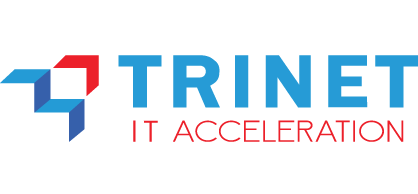Tech Innovation > Security > Security Hardening

Security Hardening
Without this solution, organizations face the following challenges:
Systems Are Vulnerable to Attacks Due to Insecure Default Configurations
Systems are vulnerable to attacks because of insecure default configurations that leave them exposed.
Brute-Force Attacks and Exploiting Weaknesses Can Easily Target Servers, Workstations, and Network Devices
Brute-force attacks and exploiting vulnerabilities can easily target servers, workstations, and network devices, leading to serious risks.
Organizations Fail to Meet Security Standards Like ISO 27001, NIST, GDPR, and CIS Benchmark
Organizations struggle to meet security standards such as ISO 27001, NIST, GDPR, and CIS Benchmark without proper protection.
Misconfigurations Are the Leading Cause of Data Leaks and Ransomware Attacks
System misconfigurations are a major cause of data breaches and ransomware attacks that threaten business security.

Key Features & Capabilities
Security Hardening reduces vulnerabilities by implementing best practices, patching, and access control.
Show Details
a. System & Server Hardening
- Removes or disables unnecessary services to reduce the risk of exploitation.
- Adjusts system configurations to security standards such as CIS Benchmark & NIST.
b. Application Hardening & Secure Configuration Management
- Ensures applications don’t run with excessive privileges.
- Uses secure coding practices to prevent exploitation of web-based applications.
c. Network & Firewall Hardening
- Secures firewall, router, and switch configurations to prevent unauthorized access.
- Enforces network segmentation to limit lateral movement of attackers within systems.
d. Endpoint & Workstation Security Hardening
- Removes unnecessary software to reduce the attack surface.
- Applies Group Policy Object (GPO) & endpoint protection policies to ensure workstation security.
e. Database & Cloud Security Hardening
- Secures databases from SQL injection & other exploitations.
- Adjusts cloud configurations to align with Zero Trust-based security frameworks.

Business Benefits
Security Hardening strengthens systems by reducing vulnerabilities and ensuring robust protection.
Show Details
a. Reduce Cyber Attack Risks & System Exploits
- Closes security gaps that can be exploited by hackers.
- Helps organizations avoid malware, ransomware, and brute-force attacks.
b. Enhance Security Resilience Without Additional Costs
- Optimizes security by simply adjusting system configurations.
- Reduces the need for additional security tools through the implementation of best practices.
c. Ensure Compliance with Security Standards & Regulations
- Meets security requirements for ISO 27001, NIST, CIS, GDPR, and UU PDP.
- Assists with compliance audits through certified configurations.
d. Improve System Efficiency & Reduce Downtime
- Well-configured systems operate more efficiently and are less vulnerable to exploitation.
- Reduces downtime incidents caused by attacks or configuration errors.

Use Cases
Security Hardening offers proactive system protection and vulnerability reduction across sectors.
Show Details
a. Banking & Finance
- Secure banking transaction servers with NIST & PCI DSS-based hardening.
- Enforce security on workstations & endpoints used by employees.
b. Healthcare Services
- Ensure Electronic Medical Record (EMR) systems are configured to HIPAA standards.
- Enhance the security of medical devices connected to the network.
c. E-Commerce & Retail
- Prevent customer data theft by hardening web servers.
- Protect online transactions from SQL injection & credential stuffing attacks.
d. Manufacturing & Supply Chain
- Secure IoT & SCADA devices in industrial environments.
- Enforce network segmentation to limit potential attacks.
e. Government & Critical Infrastructure
- Ensure government servers are configured to the highest security standards.
- Close security gaps in cloud & on-premise systems.

How It Works
Security Hardening strengthens systems against threats, ensuring reliability, protection, and optimal performance.
Show Details
a. Security Baseline Assessment & Compliance Check
- Analyzes systems to identify weaknesses & misconfigurations.
- Compares current configurations with security standards (CIS, NIST, ISO 27001).
b. System & Network Hardening Implementation
- Removes unnecessary services, protocols, & software to reduce the attack surface.
- Adjusts firewalls, servers, & databases to align with best security practices.
c. Continuous Monitoring & Automated Security Audits
- Performs automated audits to ensure configurations remain secure.
- Detects unauthorized changes in system configurations.
d. Incident Response & Adaptive Hardening
- If a system is under attack or experiences anomalies, configurations are automatically adjusted.
- Assists security teams in responding to incidents by strengthening defense layers further.
Contact our experts for further information












